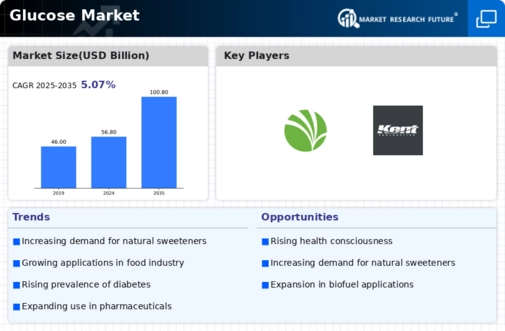Market Share
Glucose Market Share Analysis
The Glucose Market, a vital segment within the sweeteners industry, is marked by intense competition, prompting companies to adopt diverse market share positioning strategies. Differentiation stands out as a primary approach, with companies focusing on creating unique glucose products that stand out in terms of purity, quality, and applications. This may involve offering specialized glucose formulations for various industries such as food and beverages, pharmaceuticals, or personal care products. By providing distinct value propositions, companies can attract customers seeking specific attributes in their glucose, whether it's for sweetness, texture, or functional properties.
Cost leadership is a significant strategy within the Glucose Market, with some companies aiming to become efficient producers to offer competitive prices. This involves optimizing production processes, sourcing raw materials economically, and achieving economies of scale. By providing cost-effective glucose solutions without compromising quality, companies can appeal to a broad customer base, including manufacturers and industries where glucose serves as a key ingredient.
Niche targeting plays a crucial role in market share positioning for glucose brands. Instead of catering to the entire market, some companies focus on specific niches or industries that require specialized glucose formulations. For instance, a company might specialize in producing medical-grade glucose for pharmaceutical applications or create glucose syrups tailored for the confectionery industry. By concentrating on niche markets, companies can build expertise, establish strong relationships with customers in those sectors, and solidify their market position within specialized segments.
Collaboration and partnerships are increasingly common in the Glucose Market, with companies forming alliances across the supply chain. Collaborative efforts with raw material suppliers, distributors, or end-users can lead to improved efficiency, supply chain resilience, and expanded market reach. Partnerships may also involve joint research and development initiatives, allowing companies to innovate and address specific industry needs collectively. Through collaboration, companies can enhance their overall market position by leveraging shared resources and expertise.
Customer-centric approaches are essential in the glucose industry, where manufacturers often tailor products to meet the specific needs and preferences of their customers. This involves staying attuned to consumer demands, market trends, and regulatory requirements. Whether producing glucose with reduced allergens, catering to clean-label preferences, or offering specialized glucose derivatives, customer-centric strategies ensure that glucose products align with market expectations, enhancing overall competitiveness.






Leave a Comment